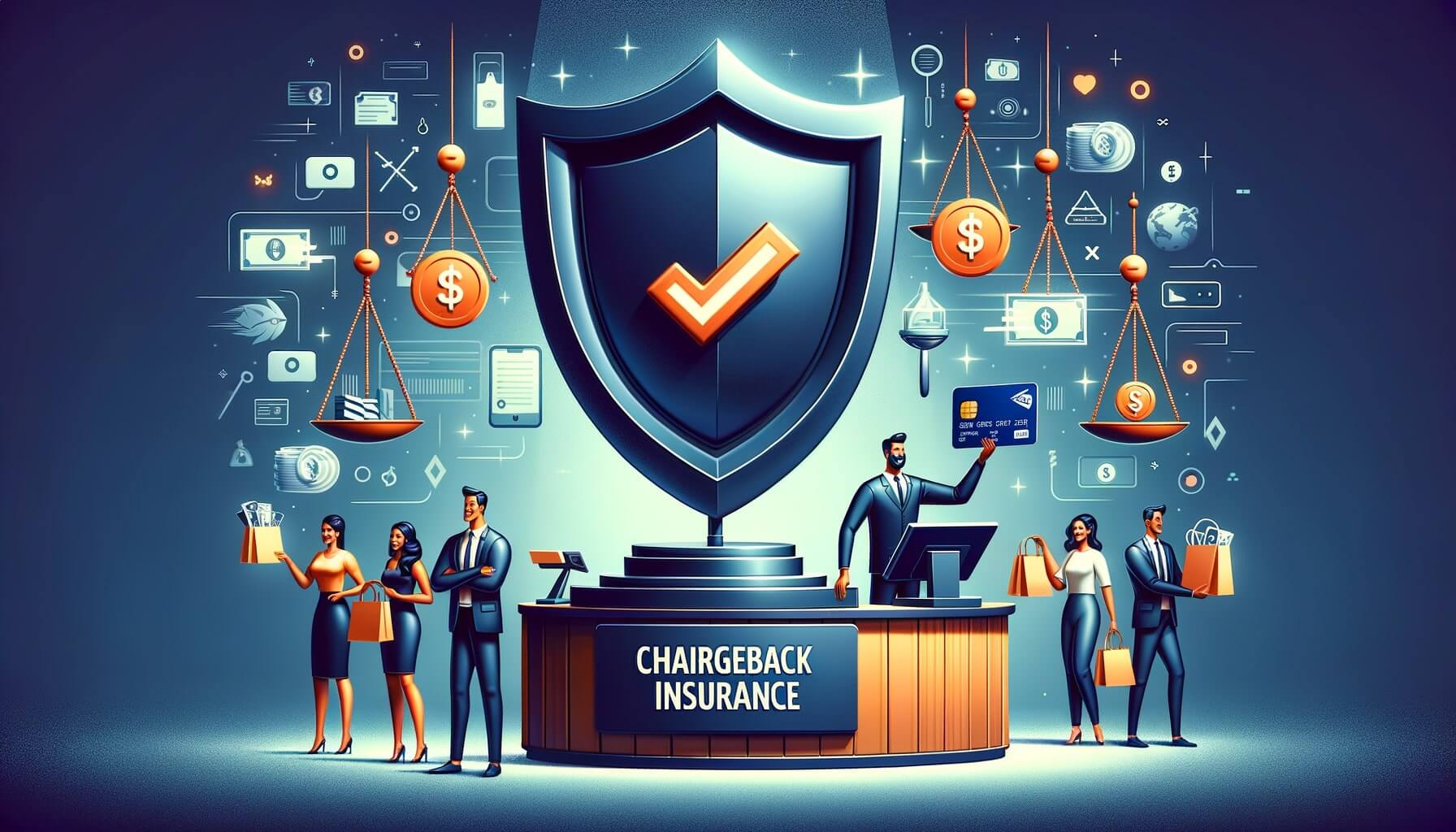
By Carol Peters March 10, 2025
As an online merchant, you are likely familiar with the term “chargeback.” Chargebacks occur when a customer disputes a transaction and requests a refund from their bank or credit card issuer. While chargebacks are designed to protect consumers from fraudulent or unauthorized transactions, they can have a significant impact on merchants. Not only do chargebacks result in lost revenue, but they can also damage a merchant’s reputation and increase their risk of financial instability.
To mitigate the risks associated with chargebacks, many merchants are turning to chargeback insurance. Chargeback insurance is a type of coverage that protects merchants from the financial losses incurred as a result of chargebacks.
In this comprehensive guide, we will explore the basics of chargebacks, the importance of chargeback prevention strategies, and the benefits of chargeback insurance for merchants. We will also provide a step-by-step guide to obtaining chargeback insurance, key considerations when filing a claim, and tips for maximizing the benefits of chargeback insurance.
Understanding the Basics of Chargebacks and Their Impact on Merchants

Before delving into the benefits of chargeback insurance, it is essential to understand the basics of chargebacks and their impact on merchants. A chargeback occurs when a customer disputes a transaction and requests a refund from their bank or credit card issuer. Chargebacks can be initiated for various reasons, including fraud, unauthorized transactions, dissatisfaction with the product or service, or failure to receive the purchased item.
The impact of chargebacks on merchants can be significant. Firstly, chargebacks result in lost revenue. When a chargeback is initiated, the merchant is required to refund the disputed amount, along with any associated fees. This can be particularly damaging for small businesses with limited cash flow.
Additionally, chargebacks can lead to increased processing fees and penalties imposed by payment processors or acquiring banks. Moreover, excessive chargebacks can result in the termination of a merchant’s account or the placement of a rolling reserve, which can further hinder their ability to conduct business.
The Importance of Chargeback Prevention Strategies for Merchants

Given the potential financial and reputational consequences of chargebacks, it is crucial for merchants to implement effective chargeback prevention strategies. By proactively addressing the root causes of chargebacks, merchants can reduce their occurrence and minimize their impact. There are several key strategies that merchants can employ to prevent chargebacks:
1. Clear and Transparent Communication: Merchants should ensure that their product descriptions, terms and conditions, and refund policies are clearly communicated to customers. This helps manage customer expectations and reduces the likelihood of disputes.
2. Robust Fraud Detection and Prevention: Implementing robust fraud detection and prevention measures can help merchants identify and block fraudulent transactions before they occur. This can include using address verification systems, CVV verification, and IP geolocation tools.
3. Excellent Customer Service: Providing exceptional customer service can go a long way in preventing chargebacks. By promptly addressing customer concerns and resolving issues, merchants can prevent customers from resorting to chargebacks as a means of recourse.
4. Accurate and Detailed Order Fulfillment: Merchants should ensure that orders are accurately fulfilled and promptly shipped. Providing customers with tracking information and delivery confirmation can help prevent disputes related to non-receipt of goods.
5. Dispute Resolution and Mediation: Establishing a clear dispute resolution process and offering mediation services can help merchants resolve customer complaints and disputes before they escalate to chargebacks.
Exploring the Benefits of Chargeback Insurance for Merchants

While chargeback prevention strategies are essential, they may not completely eliminate the risk of chargebacks. This is where it comes into play. Chargeback insurance provides merchants with financial protection against chargebacks, helping them recover lost revenue and avoid the negative consequences associated with excessive chargebacks. Here are some key benefits of chargeback insurance for merchants:
1. Financial Protection: It provides merchants with financial protection by reimbursing them for the disputed amount and associated fees. This helps mitigate the impact of chargebacks on a merchant’s cash flow and profitability.
2. Reputation Management: Excessive chargebacks can damage a merchant’s reputation and credibility. By having chargeback insurance in place, merchants can demonstrate their commitment to customer satisfaction and financial responsibility, thereby enhancing their reputation in the marketplace.
3. Risk Mitigation: It helps merchants mitigate the risks associated with chargebacks. By transferring the financial burden of chargebacks to the insurance provider, merchants can focus on running their business without the constant fear of financial instability.
4. Enhanced Cash Flow: Chargeback insurance ensures that merchants receive timely reimbursement for chargebacks, thereby improving their cash flow. This allows merchants to allocate their resources more effectively and invest in growth opportunities.
5. Peace of Mind: Knowing that they are protected against chargebacks provides merchants with peace of mind. They can focus on providing excellent products and services to their customers, without the constant worry of chargebacks impacting their bottom line.
How to Choose the Right Chargeback Insurance Provider for Your Business

Choosing the right chargeback insurance provider is crucial to ensure that you receive comprehensive coverage and excellent customer service. Here are some key factors to consider when selecting a chargeback insurance provider for your business:
1. Coverage Limits: Evaluate the coverage limits offered by different insurance providers. Ensure that the coverage is sufficient to protect your business against potential chargeback losses.
2. Deductibles and Premiums: Consider the deductibles and premiums associated with the chargeback insurance policy. Assess whether the costs are reasonable and align with your budget.
3. Claims Process: Understand the claims process of the insurance provider. Determine how quickly claims are processed and reimbursed, as well as any documentation or evidence required to support a claim.
4. Reputation and Experience: Research the reputation and experience of the chargeback insurance provider. Look for reviews and testimonials from other merchants to gauge their level of customer satisfaction.
5. Additional Services: Some chargeback insurance providers offer additional services, such as fraud detection tools, chargeback management software, and dispute resolution services. Assess whether these additional services align with your business needs.
A Step-by-Step Guide to Obtaining Chargeback Insurance as a Merchant
Obtaining chargeback insurance as a merchant involves several steps. Here is a step-by-step guide to help you navigate the process:
1. Assess Your Needs: Evaluate your business’s chargeback risk and determine the level of coverage you require. Consider factors such as your industry, transaction volume, and historical chargeback rates.
2. Research Insurance Providers: Conduct thorough research to identify reputable chargeback insurance providers. Consider factors such as coverage limits, deductibles, premiums, and customer reviews.
3. Request Quotes: Contact the shortlisted insurance providers and request quotes based on your business’s specific needs. Compare the quotes to determine the most cost-effective option.
4. Review Policy Terms and Conditions: Carefully review the terms and conditions of the chargeback insurance policy. Pay attention to coverage limits, exclusions, deductibles, and any additional services offered.
5. Complete Application Process: Once you have selected an insurance provider, complete the application process. This may involve providing information about your business, transaction volume, chargeback history, and financial statements.
6. Underwriting and Approval: The insurance provider will review your application and underwrite the policy. This may involve assessing your business’s risk profile and chargeback history. Once approved, you will receive the policy documents.
7. Payment and Activation: Pay the premium as per the agreed terms to activate the chargeback insurance policy. Ensure that you understand the payment schedule and any cancellation or renewal terms.
8. Integrate with Existing Systems: If applicable, integrate the chargeback insurance provider’s tools or software with your existing systems. This may include fraud detection tools, chargeback management software, or reporting dashboards.
9. Educate Your Team: Educate your team about the chargeback insurance policy and its benefits. Ensure that they understand the claims process and any specific requirements for filing a claim.
10. Monitor and Evaluate: Continuously monitor your chargeback rates and evaluate the effectiveness of the chargeback insurance policy. Make any necessary adjustments to your chargeback prevention strategies based on the insights gained.
Key Considerations for Merchants When Filing a Chargeback Insurance Claim
Filing a chargeback insurance claim can be a complex process. To ensure a smooth and successful claim, merchants should consider the following key factors:
1. Documentation: Gather all relevant documentation to support your claim. This may include transaction records, customer communication, shipping information, and any evidence of fraud or unauthorized activity.
2. Timeliness: File the claim within the specified timeframe outlined in your chargeback insurance policy. Failure to do so may result in the denial of your claim.
3. Accuracy: Ensure that all information provided in the claim is accurate and complete. Any discrepancies or inconsistencies may delay the claims process or result in the denial of your claim.
4. Communication: Maintain open and transparent communication with the chargeback insurance provider throughout the claims process. Provide any additional information or documentation requested promptly.
5. Follow-Up: Follow up with the chargeback insurance provider to ensure that your claim is being processed in a timely manner. Address any concerns or questions promptly to avoid unnecessary delays.
Tips and Best Practices for Maximizing the Benefits of Chargeback Insurance
To maximize the benefits of chargeback insurance, merchants should consider the following tips and best practices:
1. Continuously Monitor Chargeback Rates: Regularly monitor your chargeback rates to identify any trends or patterns. This can help you identify areas for improvement and adjust your chargeback prevention strategies accordingly.
2. Implement Robust Fraud Detection and Prevention Measures: Invest in robust fraud detection and prevention tools to minimize the occurrence of fraudulent chargebacks. This can include using machine learning algorithms, IP geolocation tools, and device fingerprinting.
3. Train Your Team: Provide comprehensive training to your team on chargeback prevention strategies, customer service best practices, and the proper handling of disputes. This can help reduce the likelihood of chargebacks and improve customer satisfaction.
4. Maintain Accurate Records: Keep detailed records of all transactions, customer communication, and shipping information. This documentation can be invaluable when filing a chargeback insurance claim.
5. Stay Informed: Stay up to date with industry trends, regulations, and best practices related to chargebacks and chargeback insurance. This can help you proactively address emerging challenges and opportunities.
Common FAQs About Chargeback Insurance for Merchants
Q: What is chargeback insurance?
A: Chargeback insurance is a type of coverage that protects merchants from the financial losses incurred as a result of chargebacks. It reimburses merchants for the disputed amount and associated fees.
Q: How does chargeback insurance work?
A: When a chargeback is initiated, the merchant files a claim with the chargeback insurance provider. The insurance provider reviews the claim and reimburses the merchant for the disputed amount and associated fees, subject to the terms and conditions of the policy.
Q: What is the cost of chargeback insurance?
A: The cost of chargeback insurance varies depending on factors such as the merchant’s industry, transaction volume, historical chargeback rates, and coverage limits. Merchants should request quotes from different insurance providers to determine the most cost-effective option.
Q: Does chargeback insurance cover all types of chargebacks?
A: Chargeback insurance typically covers chargebacks resulting from fraud, unauthorized transactions, and non-receipt of goods. However, coverage may vary depending on the terms and conditions of the policy.
Q: Can chargeback insurance prevent chargebacks?
A: Chargeback insurance does not prevent chargebacks. It provides financial protection to merchants when chargebacks occur. Merchants should implement chargeback prevention strategies to minimize the occurrence of chargebacks.
Conclusion
Chargebacks can have a significant impact on merchants, resulting in lost revenue, increased processing fees, and damage to their reputation. To mitigate these risks, many merchants are turning to chargeback insurance. Chargeback insurance provides financial protection to merchants by reimbursing them for the disputed amount and associated fees. It also helps merchants enhance their cash flow, manage their reputation, and mitigate the risks associated with chargebacks.
When choosing a chargeback insurance provider, merchants should consider factors such as coverage limits, deductibles, premiums, and customer reviews. Obtaining chargeback insurance involves a step-by-step process, including assessing your needs, researching insurance providers, requesting quotes, reviewing policy terms and conditions, completing the application process, and integrating with existing systems.
When filing a chargeback insurance claim, merchants should ensure that they gather all relevant documentation, file the claim within the specified timeframe, provide accurate information, and maintain open communication with the insurance provider. To maximize the benefits of chargeback insurance, merchants should continuously monitor chargeback rates, implement robust fraud detection and prevention measures, train their team, maintain accurate records, and stay informed about industry trends and best practices.
By understanding the basics of chargebacks, implementing effective chargeback prevention strategies, and obtaining chargeback insurance, merchants can protect their business, enhance their financial stability, and provide exceptional products and services to their customers.
